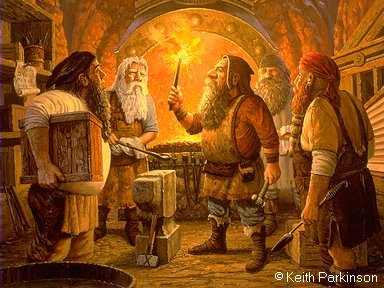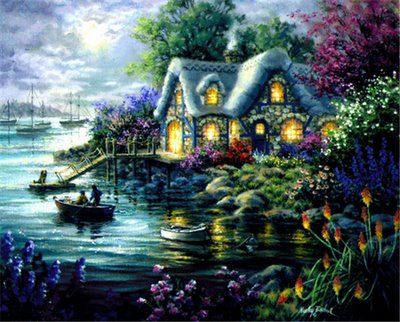The Valley of Baryn has many legends and folktales. Some are simply the stuff of storytellers and bards while others are quite real and should be headed. One of these is Witch Wood. Some say that Witch Wood is the product of fowl and dark magics performed by priestesses of some ancient diety. Other say that it is the creation of mad Widders bent on turning the wilds against men. What is known is that the Witch Wood comes as mysteriously as it guards its secrets.
Witch Wood is not a place so much as an occurance. Travellers speak of being swallowed by a strange mist that comes from nowhere and finding themselves in a gloomy hollow when it clears. Sometimes a person travelling a perfectly familiar road will find they have taken a wrong turn, never knowing that they have slipped into Witch Wood until they are hopelessly lost within its tangled thickets. No matter how it comes, Witch Wood can appear any place that is isolated and alone.
The physcial characterisitics of Witch Wood are always the same. Regardless of where it appears, Witch Wood appears as a twisting, tangled maze of trees and clawing branches illuminated by a disembodied eerie light. In the day, a mist obscures clear vision in the Witch Wood but by night, this mist thins, forming phantasmal whisps of haunting form that filters through the glowing, shadow-stricken wood. Visitors to Witch Wood find themselves disoriented, chilled and with a contant sense of dread, even when they are in good number and company as if the woods themselves radiating such sensations.
Within the Witch Wood there are living things ranging from ordinary rabbits, boars, deer - all the things that ordinary forests would find themselves denizened with. Witch Wood denizens are not ordinary creatures, however, and those who have found themselves with the Witch Wood's embrace report even the most simple creature seems to have an otherworldly characteristic to it, flickering, fleeting as if it were not wholey of this world. But there are other inhabitants which must be given greater concern withing Witch Wood for it is also a place of spirits and demons.
Those who have escaped Witch Wood say that they were witness to strange rites and gathering of dancing, leering devils. However, they also report being met with spectres of more subline nature. Figures wandering between the tangled trunks have beckoned to travellers, whispers silent words to them which could none the less be heard. The noted traveller, Angus Morwyn, claims to have been given shelter from persuing bewitched wolves by a strange woman of luminous continence and warm demeanor.
Escaping Witch Wood is more a matter of luck and endurance than it is skill. Nobody has ever been able to credibly say that they found their way out of Witch Wood, but simply that after a time, they found themselves free of its maze-like trees and haunting glow. Sometimes it is asimple as waking up after a night in Witch Wood other times it requires days of constant struggle against those things that seem to make these places their home.
One final note about Witch Wood is that it seems to be of particular interest to the Sister of Scaera, those shadowy hedge witches that seem to lurk in every corner of the valley. Any time that Witch Wood appears it is sure to draw these odd priestesses to it. For what, it cannot be said, but they have a purpose for it.







